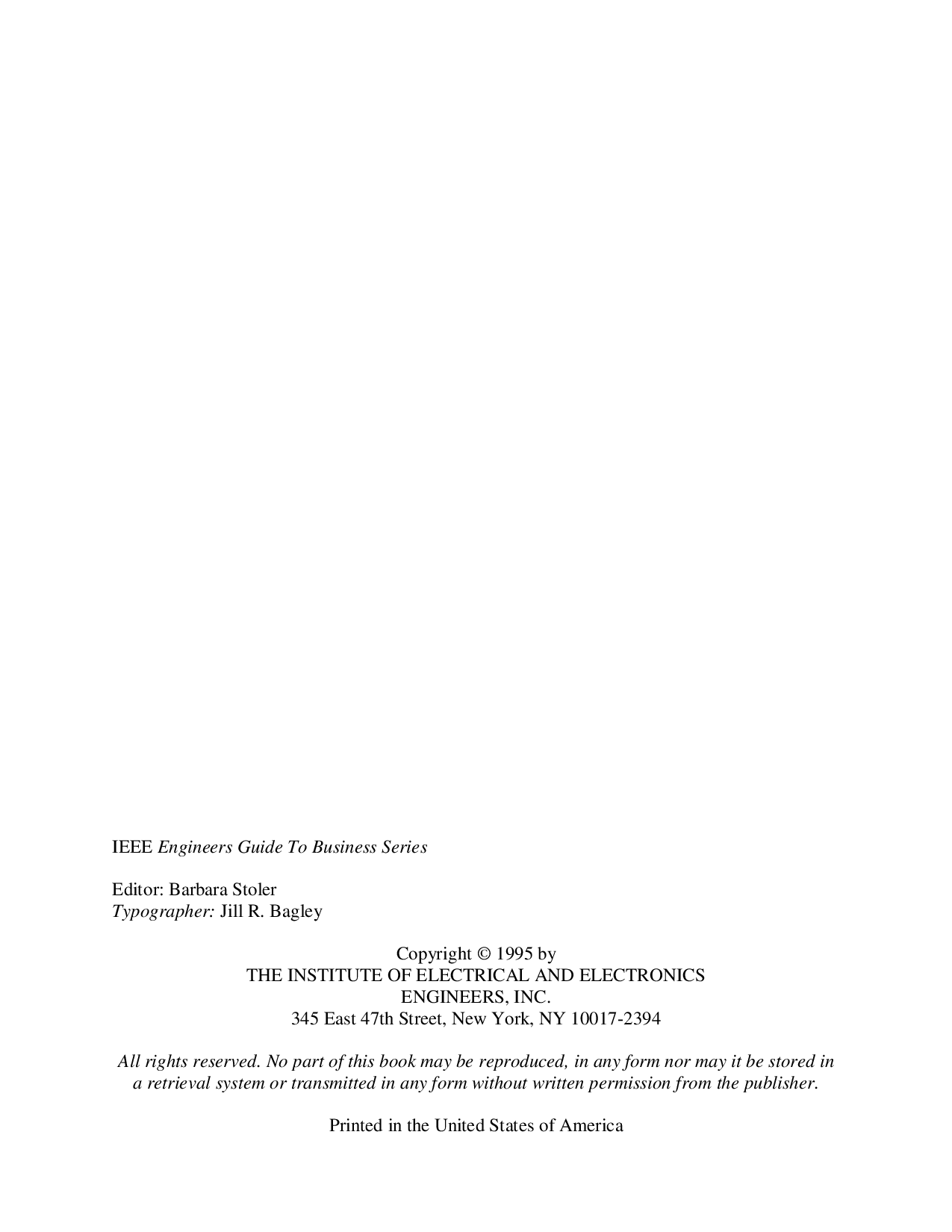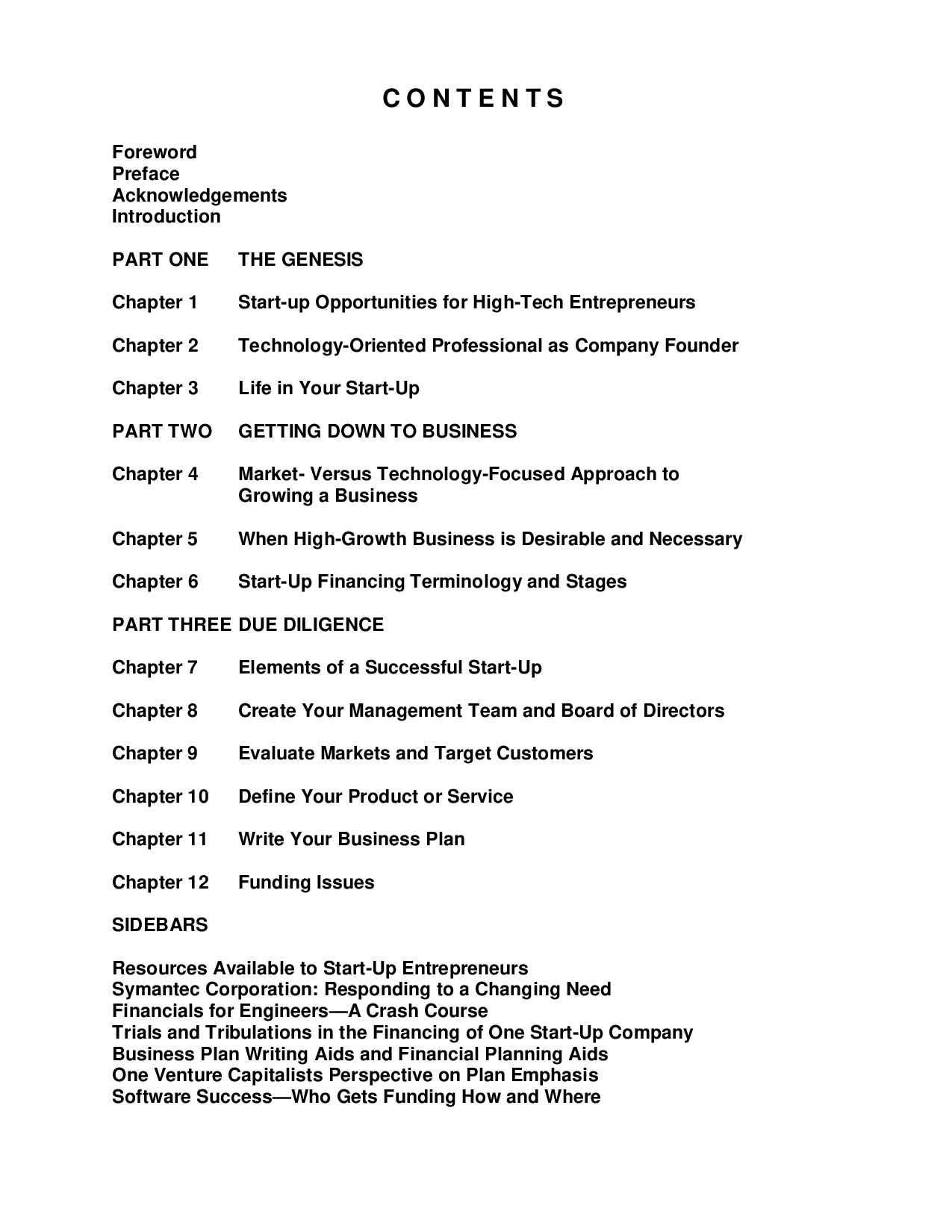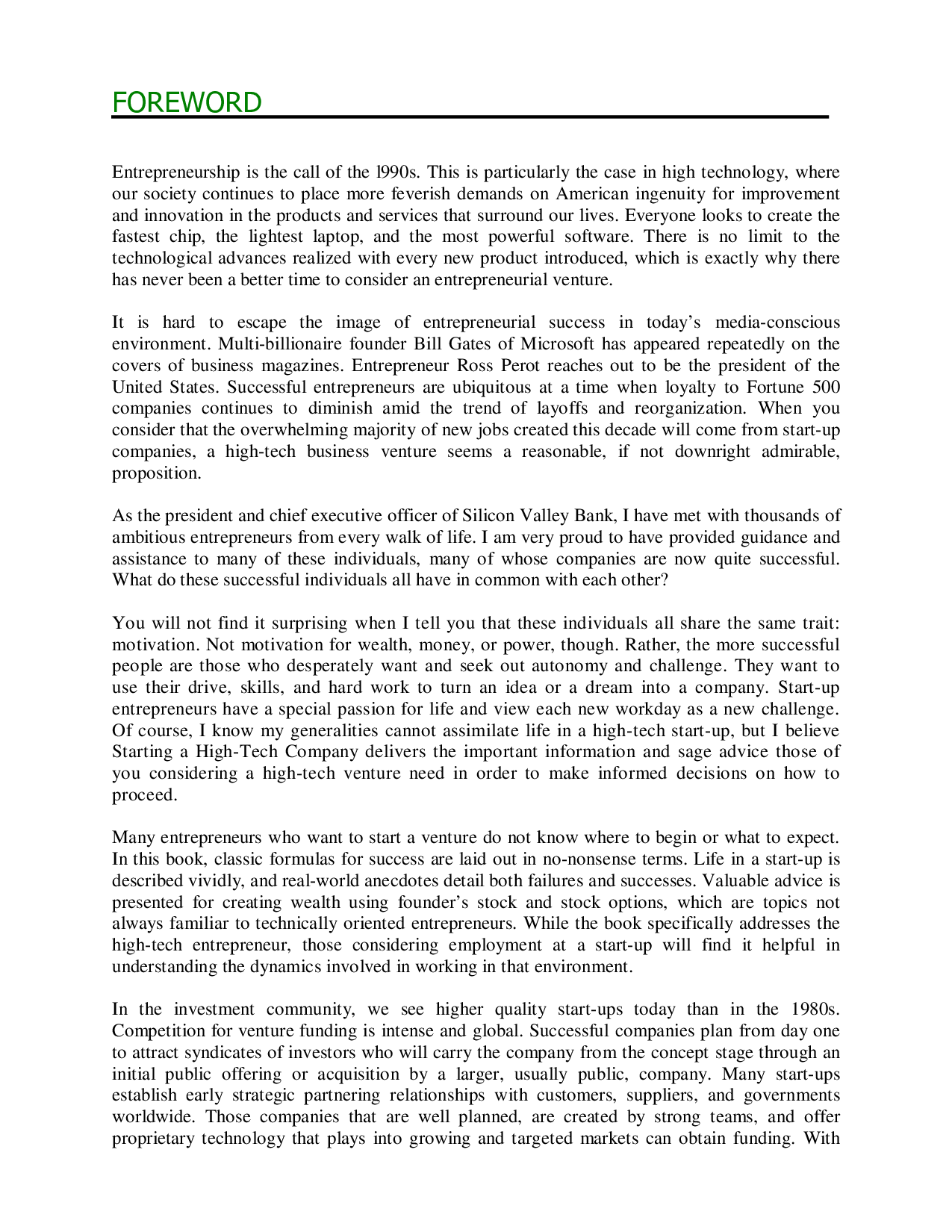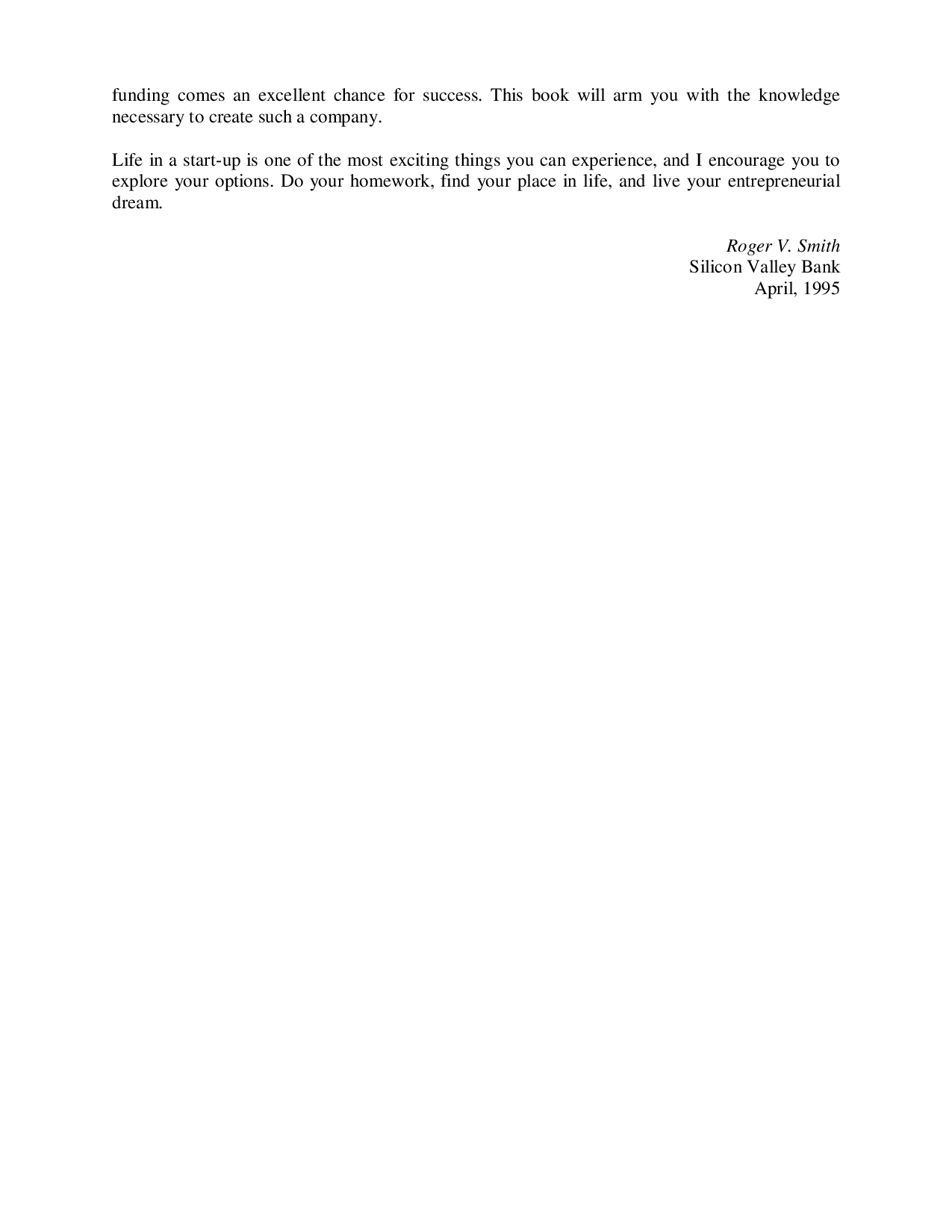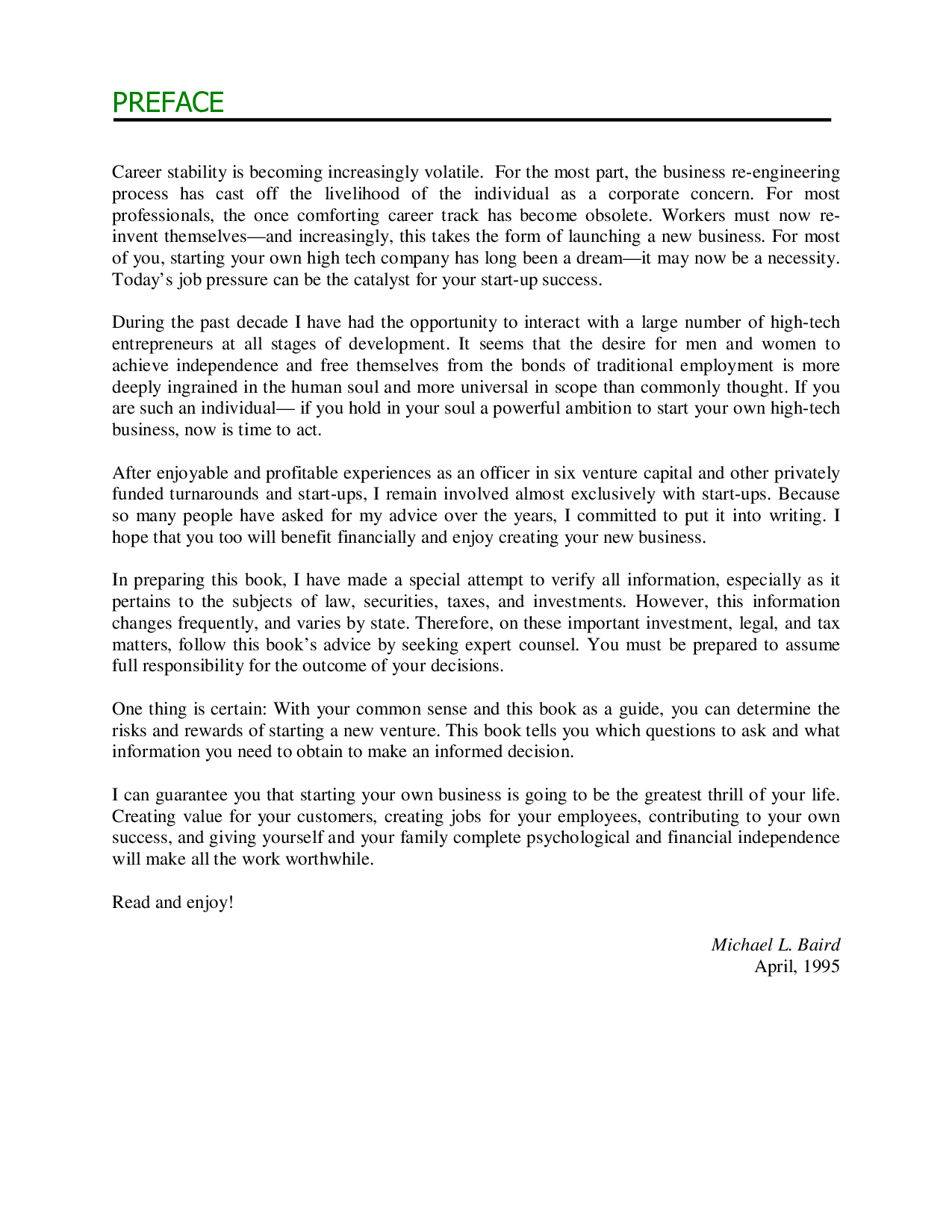Volume VII
67$57,1*#$#+,*+07(&+#&203$1<
by
Michael L. Baird
The Institute of Electrical and Electronics Engineers, Inc.
New York, New York
Net w ork ing
the World TM
IEEE Engineers Guide To Business Series
Editor: Barbara Stoler
Typographer: Jill R. Bagley
Copyright © 1995 by
THE INSTITUTE OF ELECTRICAL AND ELECTRONICS
ENGINEERS, INC.
345 East 47th Street, New York, NY 10017-2394
All rights reserved. No part of this book may be reproduced, in any form nor may it be stored in
a retrieval system or transmitted in any form without written permission from the publisher.
Printed in the United States of America
CONTENTS
Foreword
Preface
Acknowledgements
Introduction
PART ONE THE GENESIS
Chapter 1 Start-up Opportunities for High-Tech Entrepreneurs
Chapter 2 Technology-Oriented Professional as Company Founder
Chapter 3 Life in Your Start-Up
PART TWO GETTING DOWN TO BUSINESS
Chapter 4 Market- Versus Technology-Focused Approach to
Growing a Business
Chapter 5 When High-Growth Business is Desirable and Necessary
Chapter 6 Start-Up Financing Terminology and Stages
PART THREE DUE DILIGENCE
Chapter 7 Elements of a Successful Start-Up
Chapter 8 Create Your Management Team and Board of Directors
Chapter 9 Evaluate Markets and Target Customers
Chapter 10 Define Your Product or Service
Chapter 11 Write Your Business Plan
Chapter 12 Funding Issues
SIDEBARS
Resources Available to Start-Up Entrepreneurs
Symantec Corporation: Responding to a Changing Need
Financials for EngineersA Crash Course
Trials and Tribulations in the Financing of One Start-Up Company
Business Plan Writing Aids and Financial Planning Aids
One Venture Capitalists Perspective on Plan Emphasis
Software SuccessWho Gets Funding How and Where
)25(:25'
Entrepreneurship is the call of the l990s. This is particularly the case in high technology, where
our society continues to place more feverish demands on American ingenuity for improvement
and innovation in the products and services that surround our lives. Every
IEEE 商业计划书写作方法 .pdf


